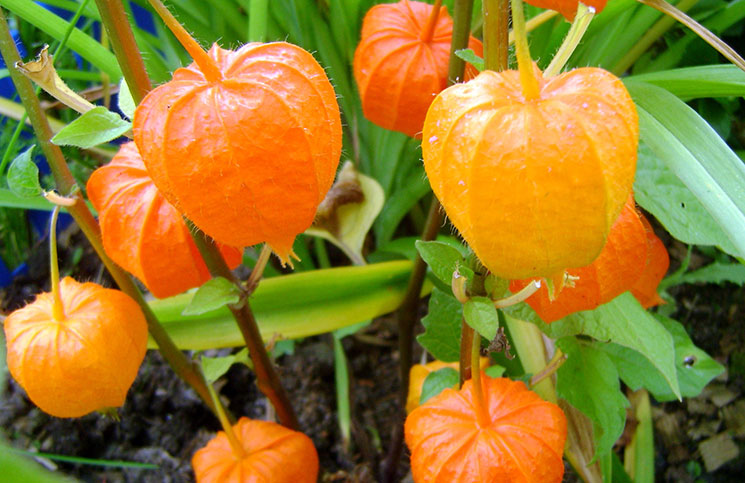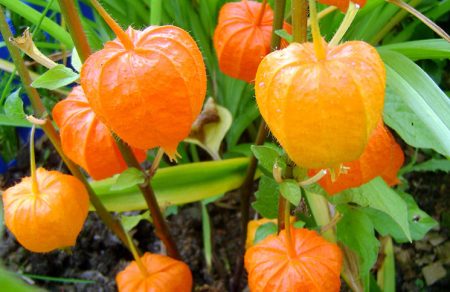
Each grower wants to decorate his personal plot in a special way, so that it will take your breath away from planted flower crops. Get closer to the desired result will allow Physalis. The plant belongs to the nightshade family. All varieties are divided into edible and inedible (decorative). Outwardly, they are practically no different, therefore, before planting, you need to carefully study which varieties are edible and which are not.
The plant does not tolerate frost, therefore, in Russia, Physalis is first planted for seedlings, and then only transplanted into the open ground when the temperature regime reaches + 20 ° C.
Planting Physalis
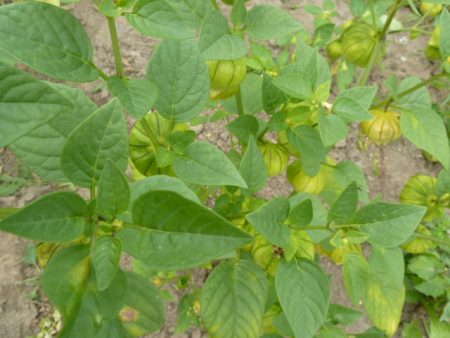
Most often, gardeners prefer the edible Physalis, which can be used in the preparation of various salads, preserves, desserts and even wine. Planting time depends on the variety type and the region where the plant will be cultivated. Enlarged Physalis can be divided into:
- early ripening varieties that need 95-100 days after sizing of the seed material for the fruits to ripen. A variety of early Physalis is planted in the North and Central regions of Russia, so that the plants have time to fully mature in the summer. In the South, early ripe Physalis can be grown in a seedlingless way. We give the name and characteristics of the edible early varieties:
"Korolek" is a vegetable variety of Physalis, perfect for processing into jam, jam, candied fruit, wine. Ripens on 90-95 days after full germination of seeds. Bushes grow 60-80 centimeters high. The taste of the vegetable is sweet and sour. From one bush you can collect up to 4-5 kilograms of fruit. Perfect for growing in the suburbs.
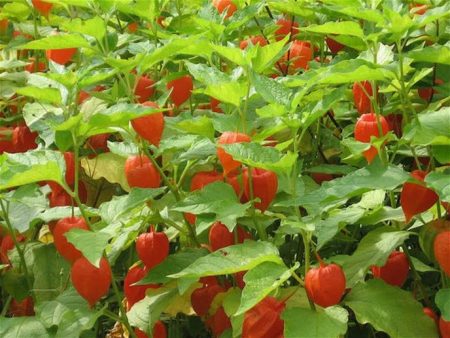
- mid-ripening varieties ripen in 105-120 days from the moment of sizing of the seed material. It is preferable to grow plants in the South, but, and in the central part, the fruits will have time to ripen if planted in time for seedlings.
"Magician" - a medium-sized variety of Physalis, 1.2-1.6 meters. In the middle lane they are grown in film greenhouses, in the South it can be cultivated on open soil. The fruits are small, their mass reaches only 8-10 grams. The taste resembles strawberries and grapefruit. Fruits are painted in brown-orange color.
“Philanthropist” will delight the honey-sweet taste of the fruit. Bushes grow low, 30-35 centimeters. The ripening period is 120 days from germination. The variety belongs to the strawberry variety of Physalis, so the berries are formed by 1-2 g.
- late-ripening varieties ripen no earlier than 138-155 days from hatching of seeds on the surface of the earth. They are planted in the southern regions, in the North and in the central regions; the late ripe Physalis will not have time to mature on open ground. Seeds for seedlings, it is recommended to plant in March or April. The brightest representative of late-ripening varieties is Columbus.
Planting material is placed in nutritious, moistened soil, observing the temperature regime at the level of + 22-25 ° C.
Favorable days for planting Physalis in 2018

The sowing calendar for 2018 will allow you to choose a favorable day for planting plants.
| Planting month | February | March | April | May | June |
| Positive period for sowing seeds | 17-23, 25-27 | 1, 10-13, 18-22, 24-29 | 2-4, 16-18, 20-27 | 1-6, 9-11, 14, 20-24, 26-29 | 1-3, 6-10, 15-16 |
| Unfavorable period for sowing seeds | 15-16 | 2-3, 16-17 | 15-16, 30 | 15, 29 | 1-14 |
Throughout February and March, all varieties of Physalis can be sown to get an early harvest. Through April, mid-early and early varieties are sown. As for May and June, during this period you can sow early varieties so that they have time to ripen before the fall.
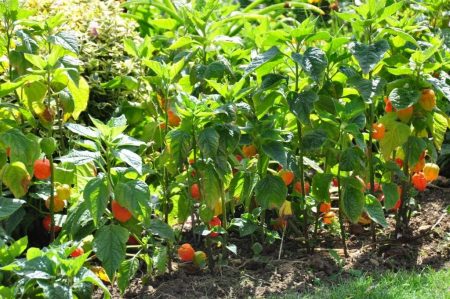
Planted Physalis will be a wonderful decoration of your site, and even delight with delicious, nutritious fruits.

